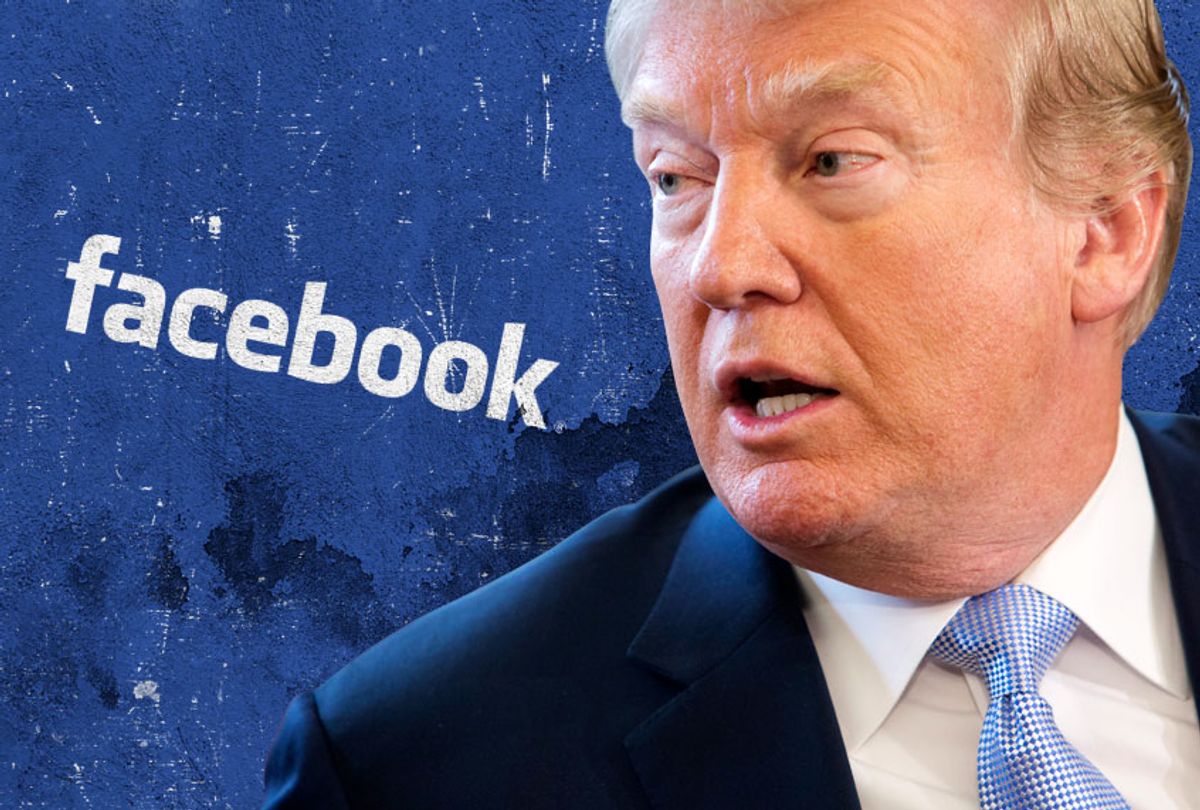President Trump’s re-election campaign has spent millions to target senior citizens on Facebook with anti-immigrant ads, according to a data analysis by Bully Pulpit Interactive published by Axios.
The campaign has spent 44 percent of its Facebook ad budget targeting voters over 65 years old, according to the data. That budget appears to be huge. The campaign has spent at least $11.3 million on ads on the platform over the last year, according to Facebook, with $3.5 million coming in the first 10 weeks of this year, according to another analysis by Bully Pulpit Interactive.
While Trump is spending nearly half his Facebook ad budget targeting seniors, the data shows that the top 12 Democratic candidates running to oppose him have spent roughly 27 percent of their Facebook ad budgets to target voters over 65. Voters over 65 backed Trump over Hillary Clinton by a 53% to 45% margin in 2016, according to exit polls.
"We assume Trump is making a huge play to hold an advantage he had in 2016 with older white voters,” Ben Coffey Clark, a partner at Bully Pulpit Interactive, told Axios. “This follows the public statements from the campaign manager that they plan to target and reach all of their voters online, not just cultivate small-dollar donors."
The data also shows that the majority of Trump’s Facebook ads have used xenophobic anti-immigrant language. About 54 percent of the campaign’s ads are “using nativist language around immigrants,” Axios reported.
"The one thing the Trump campaign has proven time and again is that they follow the results and optimize for outcomes and not the general consensus," Zac Moffat, the founder of public affairs firm Targeted Victory, told the outlet.
The data was made available after Facebook allowed users to access its ad archive API in March, allowing people to see how campaigns are targeting certain groups.
The data shows that both Trump’s campaign and the top 12 Democrats in the race are spending just over half of their Facebook ad budgets to target voters between 36 and 64 years old but Democrats are spending nearly a fifth of their ad budgets to target voters under 35 while Trump’s campaign is spending less than 4 percent to target young voters.
Vermont Sen. Bernie Sanders has spent nearly half his Facebook ad budget to target voters between 18 to 35. The only candidate to focus more on young voters has been Rep. Tulsi Gabbard of Hawaii, who has spent 65 percent of her campaign’s Facebook ad budget to target young voters. Former Texas Rep. Beto O’Rourke has spent 38 percent of his campaign’s Facebook budget to target young people.
Those three Democrats have spent less than 15 percent of their budgets to target seniors. Meanwhile, Sen. Amy Klobuchar of Minnesota and Washington Gov. Jay Inslee are heavily targeting seniors, with more than 35 percent of their Facebook ad budget targeting voters over 65. Sen. Elizabeth Warren of Massachusetts, former HUD Secretary Julián Castro, and South Bend, Indiana, Mayor Pete Buttigieg have all spent about 27 percent of their Facebook budgets to target seniors.
Trump’s 2020 campaign manager Brad Parscale has credited Facebook with much of the campaign’s success in 2016 and raved that changes to the social network’s targeting tools were “amazing.” A quick view of the Facebook ads the campaign has funded shows numerous ads pushing false claims like “illegal aliens are coming across the Mexican border in record-breaking numbers.”
A study from Princeton and New York University published earlier this year suggested that Trump’s success with seniors on Facebook may be linked to another trend: Older users are far more likely to fall for fake news online.
According to the study, Facebook users over 65 shared nearly seven times more fake news than younger users.
“We have a generation that lived through a period where trust in media institutions was high, and now they just are more trusting of things they encounter online,” Princeton political scientist Andrew Guess, who led the study, told the Washington Post. “They haven’t developed skills and competencies that are second nature to other people that come in handy when trying to distinguish dubious from trustworthy information online.”



Shares